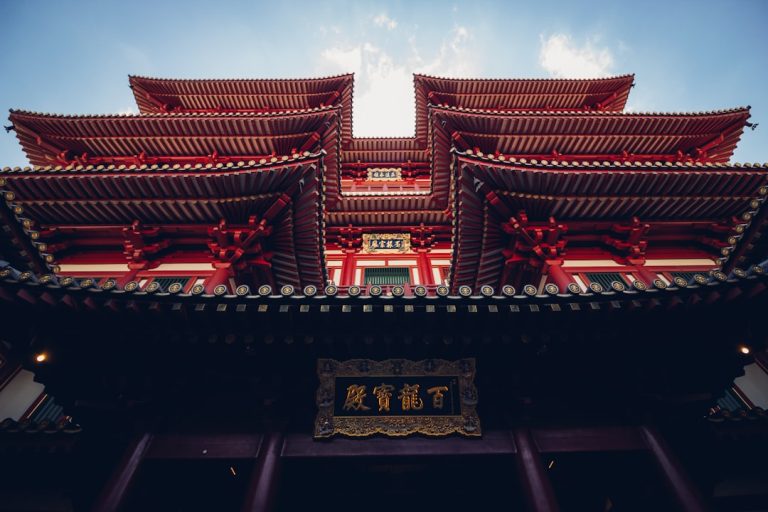Savor the Spice: Discovering the Best Sambal Lala in Singapore

Sambal Lala is a popular seafood dish in Singapore that has gained a reputation for its spicy and flavorful taste. It is a favorite among locals and tourists alike, who are drawn to its unique combination of heat and tanginess.
Sambal Lala is made with fresh clams cooked in a spicy sambal sauce, which is a chili-based condiment commonly used in Southeast Asian cuisine. The dish is often served with steamed rice or crusty bread to soak up the delicious sauce.
Key Takeaways of the Best Sambal Lala in Singapore
- Sambal Lala is a spicy and delicious seafood dish from Singapore.
- The best places to find Sambal Lala in Singapore are hawker centers and seafood restaurants.
- Sambal Lala has a long history and is believed to have originated from the Malay community in Singapore.
- To cook Sambal Lala at home, use fresh ingredients and adjust the spiciness to your liking.
- There are different varieties of Sambal Lala, including those with coconut milk or dried shrimp.
The Best Places to Find Sambal Lala in Singapore
If you’re looking to try Sambal Lala in Singapore, there are several top restaurants and hawker centers that serve this delectable dish. One of the most popular places to find Sambal Lala is at Newton Food Centre, a bustling hawker center known for its wide variety of local dishes. Here, you can find stalls that specialize in seafood, including Sambal Lala. The clams are cooked to perfection in a spicy sambal sauce that will leave you craving for more.
Another great place to try Sambal Lala is at Long Beach Seafood Restaurant, which has several branches across Singapore. This restaurant is famous for its seafood dishes, and their Sambal Lala is no exception. The clams are stir-fried with a generous amount of sambal sauce, creating a dish that is bursting with flavor. Pair it with some fried mantou buns for a truly satisfying meal.
The History and Origin of Sambal Lala
Sambal Lala has its roots in Malay and Peranakan cuisine, which are heavily influenced by the flavors of Malaysia and Indonesia. The dish originated from the coastal regions of these countries, where fresh seafood is abundant. Over time, it made its way to Singapore and became a popular dish among the locals.
The name “Sambal” refers to the chili-based sauce that is used to cook the clams. The sauce is made by grinding together chili peppers, garlic, shallots, and other spices. It is then cooked with the clams, infusing them with its spicy and aromatic flavors. The result is a dish that is both fiery and delicious.
How to Cook Sambal Lala at Home: Tips and Tricks
| Ingredients | Quantity |
|---|---|
| Lala clams | 500g |
| Garlic | 5 cloves |
| Red chili | 10 pieces |
| Onion | 1 medium |
| Tomato | 1 medium |
| Oil | 2 tablespoons |
| Salt | 1 teaspoon |
| Sugar | 1 teaspoon |
| Water | 1/2 cup |
| Lime juice | 1 tablespoon |
| Cilantro | 1/4 cup |
| Scallions | 2 stalks |
If you want to recreate the flavors of Sambal Lala at home, here’s a step-by-step guide on how to cook it:
1. Clean the clams: Start by cleaning the clams thoroughly under running water to remove any dirt or sand. Discard any clams that are cracked or open.
2. Prepare the sambal sauce: In a blender or food processor, blend together chili peppers, garlic, shallots, and other spices until you have a smooth paste.
3. Cook the clams: Heat some oil in a wok or large pan over medium heat. Add the sambal sauce and stir-fry for a few minutes until fragrant. Add the clams and stir-fry for another few minutes until they start to open up.
4. Season and serve: Season the dish with salt, sugar, and soy sauce to taste. Garnish with chopped spring onions and serve hot with steamed rice or crusty bread.
To make the dish more flavorful and spicy, you can add other ingredients such as lemongrass, ginger, or belacan (shrimp paste) to the sambal sauce. Experiment with different combinations of spices and adjust the amount of chili peppers according to your preference.
The Different Varieties of Sambal Lala: Which One is Your Favorite?
There are different varieties of Sambal Lala, each with its own unique characteristics. One popular variety is the dry version, where the clams are stir-fried with the sambal sauce until it thickens and coats the clams. This results in a dish that is slightly drier but still packed with flavor.
Another variety is the wet version, where the clams are cooked in a saucy broth made with the sambal sauce. This version is more soupy and is perfect for dipping crusty bread or pouring over steamed rice.
The most popular variety of Sambal Lala among locals is the dry version, as it allows the flavors of the sambal sauce to really shine through. However, it ultimately comes down to personal preference, and you can’t go wrong with either version.
The Health Benefits of Eating Sambal Lala

In addition to its delicious taste, Sambal Lala also offers several health benefits. Clams are a good source of protein and are low in fat, making them a healthy choice for seafood lovers. They are also rich in vitamins and minerals such as iron, zinc, and vitamin B12.
The sambal sauce used in Sambal Lala is made with chili peppers, which contain capsaicin, a compound that has been shown to have anti-inflammatory and pain-relieving properties. Chili peppers are also rich in antioxidants, which can help protect against cell damage and reduce the risk of chronic diseases.
Pairing Sambal Lala with Other Singaporean Dishes
Sambal Lala pairs well with a variety of other Singaporean dishes. One classic combination is Sambal Lala with Hainanese Chicken Rice. The mild and fragrant flavors of the chicken rice complement the spicy and tangy flavors of the Sambal Lala perfectly.
Another great pairing is Sambal Lala with Laksa, a spicy noodle soup that is a staple in Singaporean cuisine. The rich and creamy flavors of the Laksa broth balance out the heat of the Sambal Lala, creating a harmonious and satisfying meal.
Sambal Lala: A Must-Try Dish for Seafood Lovers
If you’re a seafood lover visiting Singapore, Sambal Lala is a must-try dish. Its unique taste and texture set it apart from other seafood dishes, and its spicy and flavorful sauce will leave you wanting more. Whether you prefer the dry or wet version, Sambal Lala is sure to satisfy your cravings for a delicious and satisfying seafood meal.
The Best Sambal Lala Recipes from Top Singaporean Chefs
If you’re feeling adventurous and want to try making Sambal Lala at home, here are some of the best recipes from top Singaporean chefs:
1. Chef Anthony Bourdain’s Sambal Lala: This recipe by the late chef Anthony Bourdain combines the flavors of Malaysia and Singapore. It features a spicy sambal sauce made with chili peppers, garlic, shallots, and belacan (shrimp paste), which is then cooked with the clams until they open up.
2. Chef Violet Oon’s Nyonya Sambal Lala: This recipe by renowned chef Violet Oon adds a Peranakan twist to the dish. It includes ingredients such as lemongrass, ginger, and tamarind paste, which give the dish a tangy and aromatic flavor.
3. Chef Malcolm Lee’s Modern Sambal Lala: This recipe by Michelin-starred chef Malcolm Lee puts a modern spin on the classic dish. It features a sambal sauce made with roasted chili peppers, garlic, shallots, and dried shrimp, which is then cooked with the clams until they are tender and flavorful.
Where to Buy the Best Sambal Lala Paste in Singapore: A Guide for Foodies
If you’re not up for making Sambal Lala from scratch, there are several places in Singapore where you can buy the best Sambal Lala paste. One popular brand is Prima Taste, which offers a range of ready-to-use pastes for various Singaporean dishes, including Sambal Lala. Their paste is made with high-quality ingredients and captures the authentic flavors of the dish.
Another great option is Dancing Chef, which offers a range of Asian pastes and sauces. Their Sambal Lala paste is made with a blend of chili peppers, garlic, shallots, and other spices, creating a rich and flavorful sauce that is perfect for cooking clams.
Sambal Lala is a spicy delight from Singapore that has captured the hearts and taste buds of locals and tourists alike. Its unique combination of heat and tanginess makes it a favorite among seafood lovers.
Whether you try it at one of the top restaurants or hawker centers in Singapore or make it at home using a ready-to-use paste, Sambal Lala is a dish that should not be missed. So go ahead, give it a try and explore the different varieties and flavors of this delicious seafood dish.
Looking for more delicious food recommendations in Singapore? Check out this article on the “Best Klang Bak Kut Teh in Singapore” from YEGourmet. If you’re a fan of the rich and aromatic herbal broth of Bak Kut Teh, this article will guide you to the best places in Singapore to satisfy your cravings.
From tender pork ribs to flavorful soup, this article is a must-read for all Bak Kut Teh enthusiasts. Click here to read more and discover the top spots for this traditional Malaysian dish in Singapore.
FAQs of the Best Sambal Lala in Singapore
What is Sambal Lala?
Sambal Lala is a popular dish in Singapore made with clams cooked in a spicy chili paste called sambal.
What are the ingredients used in making Sambal Lala?
The main ingredients used in making Sambal Lala are clams, sambal chili paste, garlic, shallots, and other spices.
Where can I find the best Sambal Lala in Singapore?
There are many restaurants and hawker centers in Singapore that serve delicious Sambal Lala. Some popular places to try this dish include Newton Food Centre, Chomp Chomp Food Centre, and East Coast Lagoon Food Village.
Is Sambal Lala a spicy dish?
Yes, Sambal Lala is a spicy dish as it is made with sambal chili paste which is known for its spicy flavor.
Can Sambal Lala be made with other types of seafood?
Yes, Sambal Lala can be made with other types of seafood such as prawns, squid, and fish.
Is Sambal Lala a healthy dish?
Sambal Lala can be a healthy dish as clams are a good source of protein and other nutrients. However, the amount of oil and salt used in the dish can affect its overall nutritional value.
Disclaimer:
The food recommendations provided in this blog are based on our personal experiences, preferences, and research. We strive to share information that is accurate and up-to-date to the best of our knowledge, but we acknowledge that food and nutrition are subjects with varied perspectives and evolving studies.





